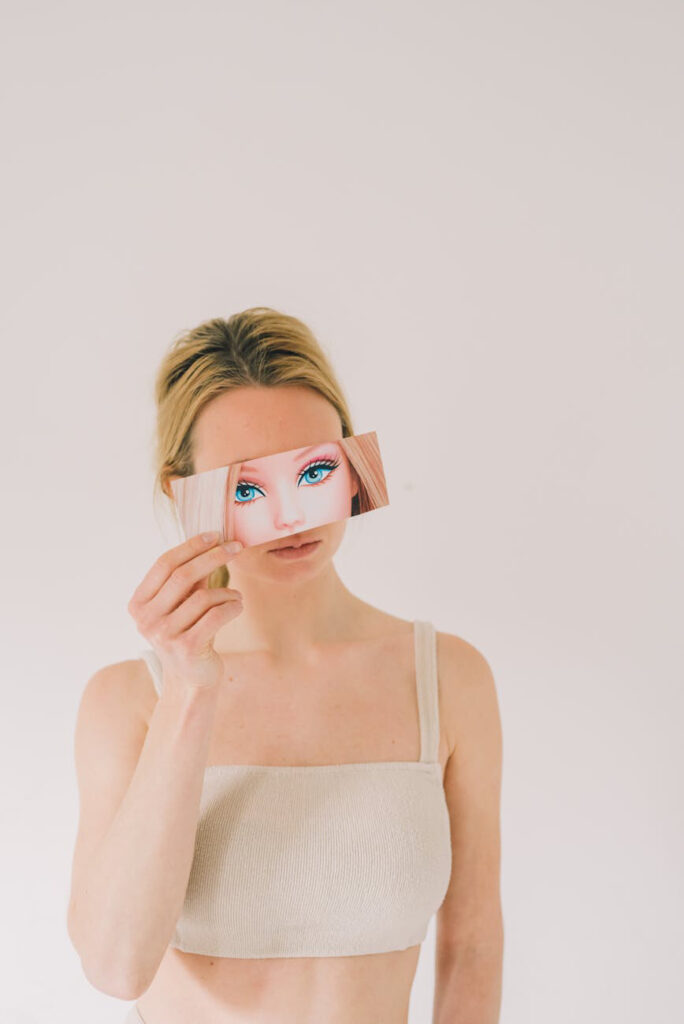I listened to Billie Eilish’s Grammy and Academy Award-winning juggernaut, “What Was I Made For?” the other day and thought about body image. As a gay man with a disability, my journey to accepting the way I occupy space in the world has been a long and sometimes painful one.
 Blissfully unaware of being different until I turned twelve, I suddenly understood that the mechanics of my frame didn’t work the same way others did, and its shape was off-kilter, too. At a time when I wanted to look like everybody else, I realized this was impossible.
Blissfully unaware of being different until I turned twelve, I suddenly understood that the mechanics of my frame didn’t work the same way others did, and its shape was off-kilter, too. At a time when I wanted to look like everybody else, I realized this was impossible.
We all struggle with feeling good about our bodies at times, whether we’ve gained a few pounds or are dissatisfied with the way our body compares to the images we’re blitzed with every day. Like Barbie, we “don’t know how to feel” about how we’re made or even what we’re “made for.”
Body image is made up of the things we tell ourselves about how we look. It’s the picture we carry in our heads—a combination of the things we like about our physical beings, the things we don’t, and how we feel about both.
Feeling bad about our bodies can result in everything from a lack of self-compassion and depression to destructive eating habits that can lead to an eating disorder. With all these negative impacts, it isn’t surprising that strategies have been developed to combat them.
Body positivity is a reaction to negative attitudes toward people who are considered overweight, as well as perceived body differences in people of color and those with disabilities. It’s based on the idea that a person can reverse negative body image by accepting their bodies no matter how much they might veer from the norm.
Body neutrality is about taking an even-handed approach. It’s based on the understanding that no matter how healthy our body image is, there are things we’re not going to like about our physical makeup sometimes, and that’s okay. Furthermore, even if we don’t think our bodies are perfect, we can still care for them and appreciate their capabilities.
Years ago, I facilitated a camp for youth with disabilities. In one of the exercises, I divided the group into pairs and asked them to tell each other something they liked about how the other person looked. While nobody ever had a problem coming up with answers to this question, when I asked them to say something they liked about their appearance, sadly, they were completely stumped.
After discussing the importance of maintaining a positive body image in developing the inner strength and confidence we need to live a healthy and independent life, I’d float the idea that all of us have things that we can be proud of when it comes to our appearance, whether it’s the deep blue of our eyes or the shine of our hair. And when I asked the question again, almost everyone came up with at least one thing they liked about their bodies. What this exercise consistently reinforced for me was that no matter how important maintaining a healthy body image is to our overall mental health, it isn’t always easy to do.
Here are a few strategies designed to help you have a more positive body image:
- Try not to be so hard on yourself. Focus on what your body is good at instead of trying to find fault with your appearance.
- Put it in writing. Write down some things you like about your personality and some things you like about your body.
- Avoid comparing yourself to others, particularly the images you see in magazines or social media.
- Try not to worry about what other people think about how you look. Like you, they’re probably much more concerned about how they look anyway.
- Focus on giving yourself positive messages about your appearance. Tell yourself, “I look put together” instead of “I’m overweight.”
As for me, I learned to like certain things about my body because other people told me to at first, i.e., “You’ve nice arms. You must work out.” But as I became more comfortable in my skin, I figured out how to accept and even love certain aspects of my body for their innate beauty—my innate beauty. (I now think I have nice legs even though they remain stubbornly crooked.)
This is what it’s like to maintain a healthy body image for most of us. There will be times when we feel at home in our bodies and times when we don’t. As with a lot of things related to our mental well-being, the key here is balance. If we give ourselves a break when it comes to our physical appearance, we can make peace with our imperfections and celebrate the things we can be proud of—a circumstance that’s a lot easier to live with.
* * *
If you’re having difficulty accepting your body, feeling good about the way you look, or have problems with overeating, excessive dieting, or exercise, the therapists at Healing Connections are here to help.
Reference
Lawler, Moira. (2024, January 30). All About Body Image: How Psychologists Define It and How It Affects Health and Well-Being. Everyday Health. https://everydayhealth/body-image/
About the Author
Charles Davis, MSW, has written for several academic publications and was a semifinalist for the 2023 Mason Jar Press 1729 Book Prize in Prose. He lectures on a variety of disability issues, including legal rights and sexuality. Mr. Davis also writes a blog on navigating loss and building a new life at: https://gayandgrieving.blog.
